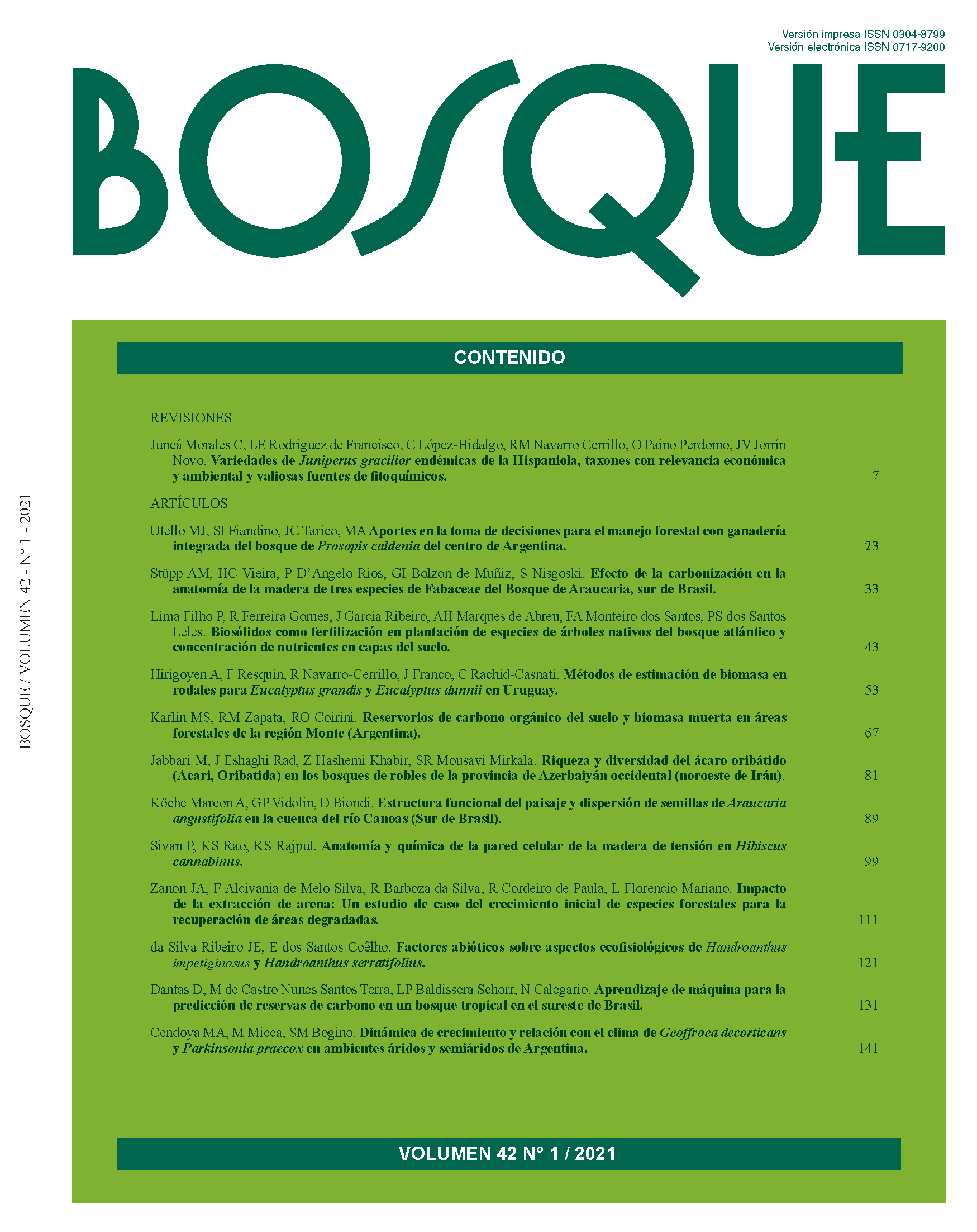Abiotic factors on ecophysiological aspects of Handroanthus impetiginosus and Handroanthus serratifolius
Main Article Content
Abstract
The objective of this research was to evaluate the influence of abiotic factors on the ecophysiological aspects of Handroanthus impetiginosus and Handroanthus serratifolius throughout the day, as well as to indicate the ideal time for ecophysiological evaluations. The design was entirely randomized, with ten treatments and six repetitions for each species. The treatments used were ten evaluation times throughout the day (8h-17h) with an interval of one hour between them. Climatic variables evaluated were internal and external temperature, relative humidity of the internal and external air of the greenhouse and the photosynthetically active radiation of the environment. Ecophysiological aspects evaluated were: net CO2 assimilation, stomatal conductance, transpiration, internal CO2 concentration, vapor pressure deficit, instantaneous water use efficiency, intrinsic water use efficiency and instantaneous carboxylation efficiency. The canonical correlation analysis and principle component analysis were used to verify associations between climatic and ecophysiological variables. In both species, climatic variables were correlated with ecophysiological variables, with higher association between photosynthetically active radiation, internal and external temperature of environment, with the rate of net CO2 assimilation, stomatal conductance, transpiration, instantaneous carboxylation efficiency and vapor pressure deficit. The influence of climatic factors on the ecophysiological aspects of H. impetiginosus and H. serratifolius was verified. In both species, the ideal time of day for measuring ecophysiological variables is between 11h and 13h.

